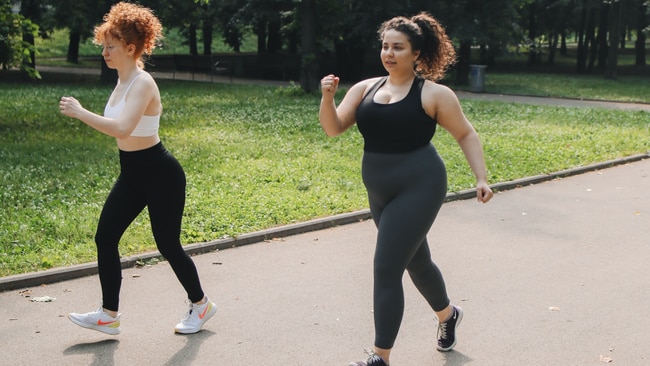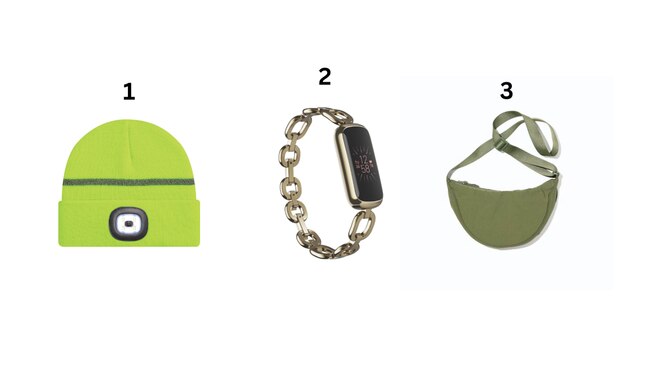7 simple ways to turn your next walk into a workout
It's time to step it up

Lifestyle
Don't miss out on the headlines from Lifestyle. Followed categories will be added to My News.
Walking has long been a hero of the exercise world. But a fascinating new study proves it’s one of the best ways to anti-age your brain. Think better memory, focus and concentration. Here’s exactly how much – and how fast – you should walk to reap major health rewards.
If you need added incentive to schedule regular strolls into your week, consider this: researchers have confirmed walking strengthens not only our muscles but also the mind, building connections that help improve memory and, in short, actually anti-age our brain.
All of that without even breaking a sweat! In what is the latest trial to cement walking’s stellar reputation, a team at the University of Maryland (UM) in the US found that walking for just half an hour, four days a week, was enough to improve memory – even in those diagnosed with mild cognitive impairment (MCI), characterised as a dip in mental sharpness, including memory and reasoning.
Over 12 weeks, 33 older adults, some of whom had MCI and others with normal cognitive function, were asked first to walk for 30 minutes on a treadmill four times a week for a month, before cranking up the speed and incline so that they walked at a higher intensity of 50-60 per cent of their maximum heart rate for the remaining eight weeks.
Like what you see? Sign up to our bodyandsoul.com.au newsletter for more stories like this.
Before and after the exercise program, participants underwent MRI brain scans and took part in a series of memory tests. By the end of the study, both groups displayed brain activity that “was stronger and more synchronised, demonstrating [that] exercise actually can induce the brain’s ability to change and adapt,” said the lead author, J Carson Smith, a professor of kinesiology at UM.
“There are so many physical, mental and social health benefits of walking, with minimal adverse effects,” says Dr Paddy Dempsey, lecturer and research fellow at the University of Leicester and honorary fellow at the University of Cambridge. “It reduces your risk of heart disease and stroke, helps manage weight, blood pressure and cholesterol, helps prevent and manage diabetes, and is important for maintaining bone density, balance and coordination, as well as improving our mood, which cumulatively leads to better mental health.” Here’s how to boost your daily walk for maximum benefits.
1. Make the 10,000-step ‘myth’ work for you
For decades we’ve been encouraged to hit 10,000 daily steps in a bid to stay healthy, but is it a reasonable target? “It’s a random goal plucked out of the air by a Japanese company who were marketing a pedometer in the 1960s,” says Joanna Hall, a qualified sport scientist and founder of the WalkActive app. “Now we understand more about the importance of walking for health – it’s not only the number of daily steps, but how quickly and often you walk.”
Still, for general health, 10,000 steps is not that far off the mark. A recent study suggested that taking at least 7,000 steps daily from the age of 40 onwards can slash the risk of early death by 50 per cent. But in a win for moderation, those exceeding 10,000 steps a day rarely outlived those taking at least 7,000. And in 2022, researchers found older adults who walked between 6,000 and 9,000 steps a day had a 40-50 per cent reduced risk of a heart attack or stroke, compared with those who only clocked up 2,000.
The message if you don’t do many? Add more steps, even in tiny increments. Researchers have found every additional five minutes of walking, or 500 steps, will deliver major protective health benefits.

2. Perfect your technique before picking up the pace
Hall says that for anyone, but particularly for beginners, perfecting how you walk is initially more important than going faster. “You can’t compromise on technique for speedier walking,” she says. “It will backfire because you won’t get as much out of your walk physically and it could strain muscles, leading to injury. It’s your arms, not your legs, that create good walking rhythm, so focus on swinging them faster in a smooth, natural motion, rather than trying to step faster with your feet.”
Leaning too far forward is a mistake many of us make when picking up the pace – but don’t, as it can lead to lower back pain. “Think about the position of your hips, keeping them level by visualising a cup of water balancing on each hip bone,” says Hall. “Another big mistake is to over-stride by taking huge steps forward, which piles pressure on the knees and hip joints.”
3. Know the ideal speed to work towards
The best way to judge how quickly (or slowly) you’re walking is to work out your average steps per minute. How? Simply set a 60-second timer on your phone or tracker and count the steps you take. Chances are you’ll be surprised by the effort it takes to walk briskly, a pace that involves enough effort to leave you puffing – most of us walk more slowly than we realise.
“A step cadence of 100 steps per minute is widely regarded as moderate-intensity walking, and 130-140 steps per minute as higher-intensity brisk walking,” says Dempsey. “But this does alter with age and a threshold pace as low as 70 steps per minute might constitute moderate-intensity walking in adults of 70-plus.”
Don’t be put off if you struggle to get anywhere near this to start with. “Walk as fast as you can without straining,” says Hall. “Technique is often compromised in people who push themselves to 125 steps per minute before they’re ready, and that can lead to back pain and hip problems, so stick to a level you can maintain for several minutes or more.”

4. Mix up your pace
“Slow is good, but moderate-to-vigorous walking is better still and will likely provide more benefits,” says Dempsey. “This is true even if you do fast walking in chunks, as studies show mixing it up is worthwhile.”
Hall agrees all paces are valuable and says it helps to label them in your mind so you accumulate more of each type. “I tell my clients to think of walking as one of three paces,” she says. “Posture pace is the kind of incidental walking you do from kitchen to living room, when you need to focus on technique and not how fast you are moving, while health pace is your medium-intensity dog walk or walk to the shops, a reasonable speed that will bring benefits such as lower blood pressure and blood sugar levels over time.”
Third, is optimum walking, which Hall describes as “the fastest possible pace you can maintain without sacrificing technique” and which can bring “significant fitness and psychological gains, better bone density, cardiovascular and muscle health. All are important and the more you do of each, the better.”
5. Add hills and climb stairs for greater intensity
Trust us, the effort they take is worth it. “Hills are good and will increase the intensity if you can manage them,” says Dempsey. “And I try to take the stairs whenever I get the opportunity, as this provides a little more ‘resistance’ and functional benefits.” Studies at McMaster University in Canada have shown that brisk walking up a flight of stairs for 20 seconds (followed by a walk back down) three times a day – a daily total of 60 seconds of intense exercise – for six weeks produces a five per cent improvement in cardiovascular fitness in people who did no additional exercise.

6. Embrace nature for the mood-boosting benefits
For many of us, our daily strolls – often with a human or canine friend – are a form of meditation. And while there’s plenty of evidence that a slow walk won’t really do much to drastically improve your fitness levels, it’s guaranteed to boost your mood.
Part of this feels-enhancing benefit comes from being outside, with nature walks in green space and open skies proven to help even people with mild to moderate depression. A study of 6,000 working people found that those who regularly took walks in green spaces had higher stresscoping abilities. Another study involving UK researchers from De Montfort and Edge Hill universities found group nature walks to be linked with significantly lower levels of stress and depression, with people who had experienced a recent traumatic life event such as divorce or job loss experiencing the greatest mood boost from walks.
“Sometimes a gentle walk is what you need to soothe the mind,” says Hall. “Walking is not just about fitness, but can be a way of healing, too.”
7. Pick it up for extra longevity
Even a small acceleration in speed could add a few extra candles to your birthday cake. For a paper in Communications Biology last year, Dempsey and his University of Leicester colleague, Professor Tom Yates, looked at daily walking and telomere length (a genetic marker of biological age) in more than 400,000 middle-aged adult participants in the UK Biobank. As we age, our telomeres shorten, a process compounded by poor diet, smoking, drinking and inactivity, and which results in accelerated cell ageing.
In a very encouraging breakthrough, Yates and Dempsey found that adults who walked at a brisk pace had a biological age 15 years younger than dawdlers. “We used information contained in people’s genetic profile to show that a faster walking pace is indeed likely to lead to a younger biological age as measured by telomeres,” says Yates. “Walking can make you younger.” And no matter your life stage, who doesn’t want a piece of that?

Your new walking wearables
Stride smarter not harder with these fit buys.

1. Beanie $18, safepak.com.au
This multi-tasking beanie features a removable LED light in the front for superior visibility. Even better, the LED can be charged in a USB port.
2. Fitbit $300, fitbit.com
With a bonus band and six-month premium membership, this special-edition tracker is all class thanks to its luxe stainless steel link bracelet.
3. Crossbody bag $20, uniqlo.com
The perfect size for daily use, accessorise your next (dog) walk with this chic-yet-practical bag complete with inner and outer pockets.
Originally published as 7 simple ways to turn your next walk into a workout


